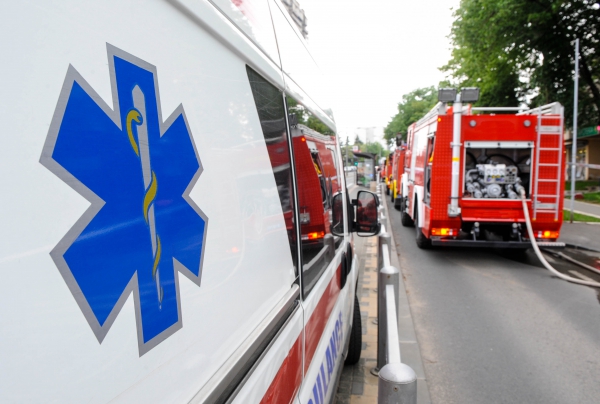Subscribe to Stay Informed
WVNCC receives half-million dollar grant for new EMT and Paramedic Program
Posted 04/07/21
West Virginia Northern Community College (WVNCC) has received a half-million dollar Advance Grant from the West Virginia Community and Technical College System to offer EMT and Paramedic training on all three of their campuses. With the grant, WVNCC can now meet the training needs of the first responder community which includes fire, police and EMS services. Anyone interested can apply immediately for the summer or fall semester.
After discussions with local fire and EMS departments, county boards of commissioners, and political leaders, it was determined there is a strong need for EMS initial, refresher, and continuing education training.
“Our meetings and research have determined that EMT and Paramedic courses, along with a central training facility, are a vital need in our region,” commented WVNCC President Dr. Daniel Mosser. “For example, the Wheeling Fire Department sends their students out of our local area for training. Creating local EMS education and continuing education programs will meet this need locally. I am proud of how quickly our Economic & Workforce Development Team was able to identify a need, receive funding, and start this vital program for our community. It is a testament to how WVNCC is able to respond to our community needs.”
The WVNCC EMT and Paramedic Programs have been supported by the City of Weirton Fire Department, Northern Panhandle Workforce Investment Board, Ohio County EMS, Valley Grove, VFD, Hancock County Ambulance Service, Wheeling Fire Department, Hancock County 911 Center, City of Moundsville, Ohio County EMA, Brooke County EMS, Bethlehem Fire Department, WV Public Service Training-Wheeling WV, and many others.
“The counties served by WVNCC include a large volunteer EMS and firefighter population who are employed full-time, in areas other than public service, and cannot afford to take time off from their regular jobs to travel outside of the region for mandatory training,” added WVNCC Vice President of Economic and Workforce Development, Dr. Phil Klein. “WVNCC intends to offer EMS training in a flexible hybrid format to meet the needs of our first responder community.”
Currently, there are no local West Virginia programs of study for paramedics. This leaves local first responders going out of town for training which drives up their costs. It also precludes smaller providers and volunteer EMS providers who do not have the resources to send their personnel for training.
In the past year, there have been over 950 job postings in the three-state region we recruit students from, and employers are located (West Virginia, Ohio, Pennsylvania). The projected growth rate over the next 10 years is 12.6%. Further, WVNCC conducted a survey throughout the region and results indicated a need of over 50 EMT and 30-40 paramedics annually. According to the research and survey of employers, on average, paramedics earn $42,000 annually and EMTs earn $32,000 annually.
“There is a huge need for this training and this will lead to rewarding and well-paying careers for individuals in the Ohio Valley,” added Mosser. “However, this is only the beginning. We plan to expand these types programs that can lead to other careers, if students want to further their education in another health related field like nursing.”
Although the Paramedic program is currently planned as non-credit career development, WVNCC plans to implement pathways to credit programs and beyond. For example, someone who obtains their paramedic certification, through WVNCC or elsewhere, is eligible to apply for the Technical Studies Degree. Students can also transition from paramedic to registered nurse through an anticipated bridge program, currently under development. Further, bridge program completers could then transition to a Bachelor of Science in Nursing through a state-wide articulation agreement.
Beyond initial certification at the EMT and Paramedic levels, WVNCC plans to offer refresher and continuing education courses. These courses include: Basic Life Support (BLS), Advanced Cardiac Life Support (ACLS), Pediatric Advanced Life Support (PALS), Tactical Combat Casualty Care (TCCC), Emergency Pediatric Care (EPC), Advanced Medical Life Support (AMLS), All Hazards Disaster Response (AHDR), NAEMT’s EMS Safety course, EMS Vehicle Operator Safety (EVOS), Geriatric Education for EMS (GEMS), Prehospital Trauma Life Support (PHTLS), Principles of Ethics and Personal Leadership (PEPL), Psychological Trauma in EMS Patients (PTEP), and others as they become available. These are classes that our partner agencies have indicated a need for in their support letters and through a comprehensive survey.
